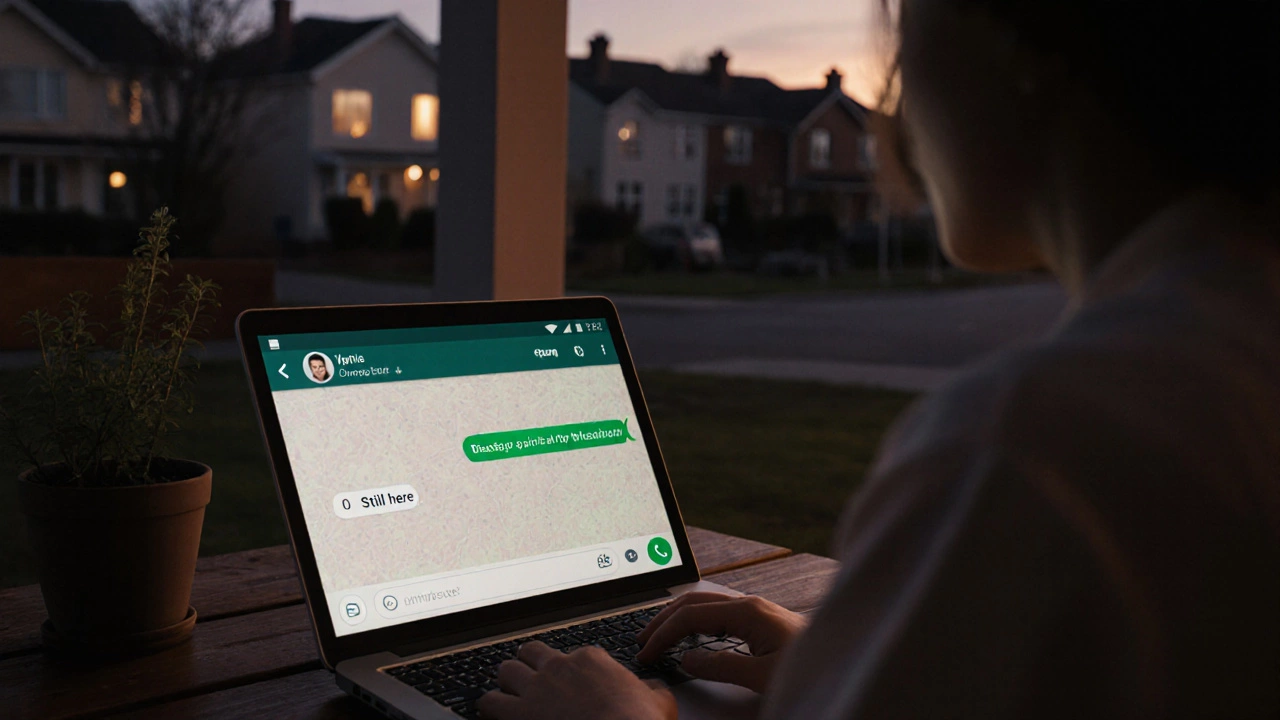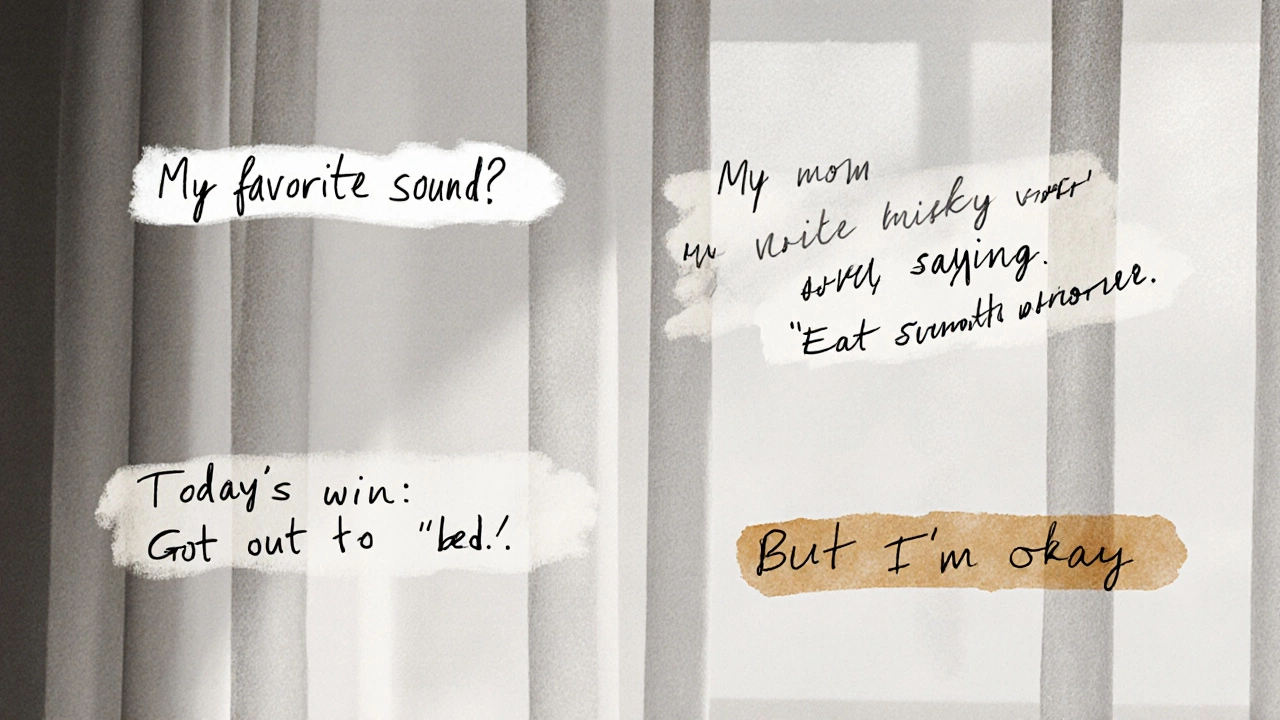How to Write Beautifully on WhatsApp: Status Ideas That Stand Out
 Nov, 16 2025
Nov, 16 2025
Ever sent a WhatsApp status and felt like it just... disappeared? Like it didn’t mean anything, didn’t feel like you? You’re not alone. Most people type out quick lines - ‘Working hard’ or ‘Good morning’ - and wonder why no one reacts. But a beautiful WhatsApp status isn’t about being poetic. It’s about being real, clear, and intentional. It’s the difference between saying ‘I’m tired’ and saying ‘Tired of pretending I’m fine. Today, I just need quiet.’
Why Your WhatsApp Status Matters More Than You Think
Your WhatsApp status isn’t just a placeholder. It’s the first thing people see when they open your chat. It’s the vibe you give before you even say hello. Think of it like your digital front porch. Is it messy? Is it inviting? Does it make someone pause and think, ‘I should check in on them’?
Studies show that people form impressions of others based on digital cues within 3 seconds. Your status is that first impression. A well-written one doesn’t need likes. It needs connection. It tells someone: ‘I’m here. I feel this. You matter enough for me to say it out loud.’
What Makes a WhatsApp Status ‘Beautiful’?
Beautiful doesn’t mean fancy words. It means honesty wrapped in simplicity. It’s not about using 10 emojis or quoting Shakespeare. It’s about saying something true in a way that lingers.
Look at these two examples:
- ‘Life is hard.’ - Generic. Forgotten in seconds.
- ‘Some days, my silence is louder than my words.’ - Specific. Feels personal. Makes you stop.
The second one works because it’s:
- Concrete - not abstract
- Emotionally honest - no pretending
- Short - under 10 words
- Relatable - someone else has felt this
Beautiful WhatsApp statuses don’t try to impress. They try to be understood.
How to Write Them: 5 Simple Rules
Here’s how to turn your next status from forgettable to unforgettable.
- Start with a feeling, not a thought. Don’t write ‘I believe in hard work.’ Write ‘My hands are sore today. But I’m proud of what I built.’ Feelings are magnetic. Thoughts are forgettable.
- Use your own voice. If you don’t talk like a poet in real life, don’t write like one online. Say it like you’d say it to a friend over tea. ‘Still figuring it out. But I’m trying.’ That’s enough.
- Leave space. Silence speaks louder than noise. A single word like ‘Still here.’ or ‘Quietly healing.’ carries weight. Don’t fill every blank.
- Use line breaks. WhatsApp lets you press ‘Enter’ to break lines. Use it. A status like:
‘I didn’t cry today.
But I held my breath a little longer than usual.’
...feels like a poem. It’s not. It’s just honest spacing. - Don’t chase trends. If you don’t know what ‘slay’ or ‘vibe check’ means in real life, don’t use it. Fake energy shows. Real energy lasts.

Real Examples That Worked (And Why)
Here are actual WhatsApp statuses people told me stuck with them:
- ‘My favorite sound? My mom’s voice saying, ‘Eat something.’’ - Simple. Warm. Human.
- ‘I’m not angry. I’m just done pretending.’ - Quiet power. No drama.
- ‘Woke up. Forgot to be sad. Then remembered I’m still here.’ - Raw. Real. No filter.
- ‘I miss the way we used to talk. Not the way we text.’ - Nostalgic. Not dramatic.
- ‘Today’s win: Got out of bed.’ - For anyone who’s been through a hard season, this says everything.
Notice the pattern? No hashtags. No emojis. No quotes from movies. Just truth, shaped into a sentence.
Formatting Tips That Make a Difference
WhatsApp doesn’t support bold or italics, but you can still make your text stand out.
- Use spaces and line breaks. Break long thoughts into short lines. It feels calmer. More thoughtful.
- Use symbols sparingly. A single asterisk (*) or dash (-) can add rhythm. Example: ‘*Still learning. Still trying.*’
- Avoid over-emoji-ing. One emoji can mean a lot. Ten emojis mean you’re trying too hard. A single 🌱 or ☕ or 🖤 says more than a whole sentence.
- Use Unicode characters for style. Try these:
- • Instead of bullet points, use ◦ or ➤
- • Instead of quotes, use ‘ or ’ (curly quotes look more polished)
- • Use a thin space ( ) between words for elegance - ‘I’m not okay yet.’
These aren’t tricks. They’re tools. They help your words breathe.
What to Avoid Like the Plague
Some status habits make people scroll past faster.
- Copy-pasted quotes. ‘The only way to do great work is to love what you do.’ - Steve Jobs. We’ve seen it. 47 times today. If you didn’t write it, it’s not yours.
- Overly dramatic sadness. ‘My heart is broken. No one understands.’ - This doesn’t invite connection. It invites pity. And pity doesn’t build relationships.
- Trying to be mysterious. ‘.’ - One dot. What does that even mean? If you want to be quiet, be quiet. Don’t make people guess.
- Boasting. ‘Just got promoted!’ or ‘New car unlocked!’ - If you’re sharing joy, say it. But don’t make it a trophy display.
Your status isn’t a resume. It’s a whisper. Make it count.

When to Change Your Status
You don’t need to change it every day. But here are good times to update:
- After a quiet moment of clarity - ‘Today, I chose peace over pressure.’
- After a small win - ‘Finished the book. Took me 3 years.’
- After a hard day - ‘I’m not okay. But I’m here.’
- When you want to say ‘I’m thinking of you’ without saying it.
Don’t change it because you’re bored. Change it because you mean it.
Final Thought: Your Words Are a Gift
People don’t remember your status because it was clever. They remember it because it felt like a hand on their shoulder. A quiet ‘I see you’ in a noisy world.
Write like you’re speaking to someone who’s been alone too long. Write like you’re handing them a cup of tea in the dark. Write like you care - not because you want likes, but because you want them to feel less alone.
That’s beautiful.
Can I use emojis in my WhatsApp status?
Yes - but sparingly. One emoji can add warmth, like a heart (❤️) or a plant (🌱). Too many make it look like you’re trying too hard. A single 🌅 after ‘Woke up to quiet light’ says more than five emojis ever could.
Should I use quotes from movies or books?
Only if it’s something you truly feel - and even then, rephrase it. Copying ‘To be or not to be’ doesn’t make you deep. Saying ‘Some days, I just need to be’ - that’s yours. Your words carry weight. Borrowed ones don’t.
How often should I change my WhatsApp status?
Not every day. Change it when something inside you shifts - after a good cry, a quiet win, or when you finally feel okay again. It’s not about frequency. It’s about truth.
Why does my status get no reactions?
If it feels generic - ‘Good morning’ or ‘Working hard’ - people scroll past. Beautiful statuses don’t ask for attention. They invite it. Try something honest: ‘Today, I didn’t talk much. But I listened.’ That’s the kind that makes someone pause and send a simple ‘I’m here.’
Can I write a status in Hindi or another language?
Absolutely. If your heart speaks in Hindi, Tamil, or Bengali, write it that way. Language is emotion. A status in your mother tongue often feels more real than a perfect English quote. People connect with authenticity, not translation.
Next Steps: Try This Today
Don’t overthink it. Right now, close your eyes for 10 seconds. What’s one thing you’re feeling - quietly, deeply - that you haven’t said out loud? Write it. Not as a quote. Not as a poem. Just as you’d say it to your best friend.
Then set it as your status.
That’s it. No filters. No hashtags. Just you.